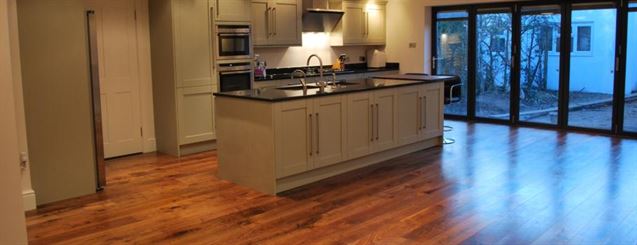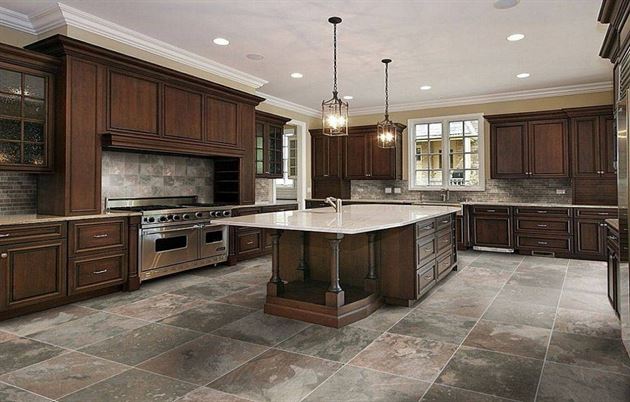The two most popular selections for kitchen flooring are Wood and Tile. Both are excellent choices, but today, we will have a look at them in greater detail and discuss the pros and cons of each.
The kitchen floor is one of the most used (and sometimes abused) parts of the house so it needs to be able to weather it all and make for an easy clean up after all is said and done and dinner has been served.
Take a look at how these two floor favourites measure up to the challenge.

WOOD
Wood was an all-time favourite in the past – dominating kitchens as far back as those of our great great grandmothers. But don’t be so quick to dismiss this old favourite, because it is now making a great comeback.
Pros:
Visual appeal – While wood floors are not suitable for all kitchen types, they do add a touch of class and sophistication when installed. Wood floors also increase property value as they are beautiful, cosy, and welcoming.
Allergy-deterring features – Allergens such as dust, pet hair, and dirt do not stick to wood as easily as they do on carpets and other surfaces. Wood floors therefore help prevent allergies.
Environmentally-friendly – Wood lasts a long, long time and is environmentally-friendly, making it the sustainable choice for many homeowners.
Cons:
Cost – Wood doesn’t come cheap, not if you want to do it right. But for real aficionados, there are plenty of clever hacks that can make it less expensive and more viable.
Maintenance – Spills, falls, and other unwanted accidents can happen more frequently in the kitchen that anywhere else in the house. Wood flooring requires greater care in this case. Cleaning materials need to be wood-friendly, and regular treatment is needed to preserve wood floors and make them last much longer.
Strong personality – While this is usually considered to be a good thing, in the case of wood floors, the fact that it is a living thing means it creaks, absorbs, and breathes. Over time, the character you fell in love with may become a nightmare as your wood floors create movement, noise, and other small, but still unpleasant surprises. Your materials provider should be able to provide insight as to getting timber that would behave, sound, and feel the way you want it to over time.
Wear and tear – The kitchen is one of the busiest parts of the house and hardwood floors can easily get scratched and absorb moisture. Laminate floors are more suitable and durable if you run a busy kitchen.

TILE
If there’s one kitchen favourite that tops wood, it’s got to be tiles. They come in different shiny and textured designs and are strong and sturdy.
Pros:
Strength – Tiles are strain-resistant and can handle plenty of foot activity.
Flexibility – When it comes to design, tiles offer plenty of choices. Light-coloured tiles and large ones help make any space look bigger, while darker ones add shade and contrast.
Adaptability – Temperatures in the kitchen have a tendency to rise, but tiles are up for that challenge. They can help keep you cool in warm weather too.
Cons:
Limited – If you opt for one of those hard-to-find, uniquely designed tiles, you have to be extra careful with them because manufacturers stop making certain tiles on a regular basis, and if happen to need some for replacing or repair, you might not be able to find an exact match for your tiles at home.
Stain-prone – The thing about light-coloured tiles is that they stain easily. There are plenty of stain-removal hacks these days, but if you don’t want to worry about that, go for darker tones instead. Textured tiles, similarly, are harder to clean and require more maintenance.
Shatter-prone – Drop glass on tiled floors and you can almost be certain that thing will shatter to pieces. You have to be careful when you have tile flooring in the kitchen because tiles are not a drop-friendly surface.
Image Courtesy of jfjwoodflooring.co.uk and freshyourhomedesign.com



